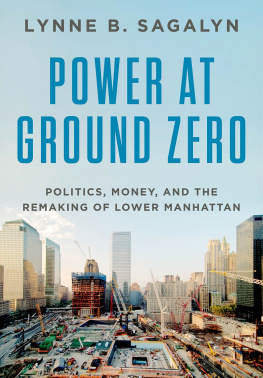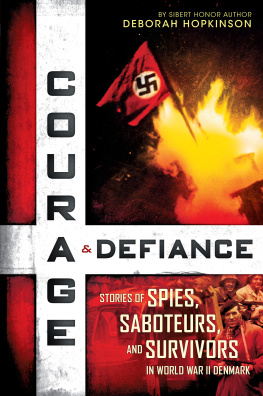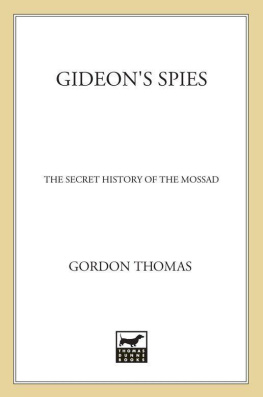BATTLEGROUND NEW YORK CITY
Related Potomac Titles
Bullets, Bombs, and Fast Talk: Twenty-five Years of
FBI War Stories, James Botting
Endless Enemies: Inside FBI Counterterrorism,
Raymond W. Holcomb, with Lillian S. Weiss
One Marshals Badge: A Memoir of Fugitive Hunting,
Witness Protection, and the U.S. Marshals Service,
Louie McKinney, with Pat Russo
BATTLEGROUND NEW YORK CITY
COUNTERING SPIES SABOTEURS, AND TERRORISTS SINCE 1861
THOMAS A. REPPETTO

Copyright 2012 by Potomac Books, Inc.
Published in the United States by Potomac Books, Inc. All rights reserved. No part of this book may be reproduced in any manner whatsoever without written permission from the publisher, except in the case of brief quotations embodied in critical articles and reviews.
Library of Congress Cataloging-in-Publication Data
Reppetto, Thomas A.
Battleground New York City : countering spies, saboteurs, and terrorists since 1861 / Thomas A. Reppetto.1st ed.
p. cm.
Includes bibliographical references and index.
ISBN 978-1-59797-677-0 (hardcover)
ISBN 978-1-59797-880-4 (electronic edition)
1. Subversive activitiesNew York (State)New YorkHistory. 2. CrimeNew York (State)New YorkHistory. 3. EspionageNew York (State)New YorkHistory. 4. TerrorismNew York (State)New YorkHistory. 5. PoliceNew York (State)New YorkHistory. 6. Secret serviceNew York (State)New YorkHistory. 7. Intelligence serviceNew York (State)New YorkHistory. I. Title.
HV6795.N5R47 2011
363.25931097471dc23
2011028461
Printed in the United States of America on acid-free paper that meets the American National Standards Institute Z39-48 Standard.
Potomac Books
22841 Quicksilver Drive
Dulles, Virginia 20166
First Edition
10 9 8 7 6 5 4 3 2 1
To the memory of Insp. Thomas J. Tunney,
commanding officer of the NYPD bomb and
neutrality squads, 19141917, and, as a U.S. Army
captain, commander of the first American military
counterintelligence unit, 19171918
CONTENTS
INTRODUCTION
Here begins the great game.
RUDYARD KIPLING
On a bitter cold night in February 1993, New York City police commissioner Ray Kelly allowed me to witness a secret drill by the NYPD. Hundreds of officers from all over the city were mobilized to deal with two thousand unruly demonstrators who had illegally assembled at the Vietnam Veterans Plaza, in Manhattans financial district. As the scenario called for, when the demonstrators (actually fifty cops dressed in old clothes) refused to disperse, they were arrested.
Thirty-six hours later, many of us who had been at the exercise returned to the same area. This time it was not a scripted sit-in but a real act of war. Terrorists had detonated an explosive device inside a truck parked in a garage below the World Trade Center. The blast ripped through several floors, cut off power, and sent thousands of people fleeing for their lives. Six people were killed; another thousand required treatment for injuries, smoke inhalation, or shock. Within a few days, FBI agents, assisted by NYPD detectives, arrested a group of Islamic militants for the crime. Over the next two years, all the defendants were convicted and given long prison sentences. Terrorist groups had previously blown up American embassies, Marine barracks, and airplanes in various parts of the world, but they had not struck on U.S. soil. Now, Americas principal city was the target.
After the first World Trade Center bombing, foreign intelligence services such as Israels Mossad warned U.S. authorities that terrorists would try again to attack some high-profile objective, most likely in New York City. NYPD detectives, carrying out follow-up investigations, discovered lists of possible targets, such as the United Nations complex, the Statue of Liberty, and Rockefeller Center. In addition to the possibility of bombing buildings, police and federal agents uncovered plots to attack the subways or to send commando teams to shoot up corporate headquarters and posh hotels. The one form of attack the NYPD did not canvass was an air raid. However, on September 11, 2001, Islamic hijackers flew airliners into the twin towers of the World Trade Center, killing nearly twenty-eight hundred people and achieving a level of destruction that most Americans never imagined possible.
Viewed from a historical perspective, the Trade Center attacks should not have been unexpected. New York City has always been the principal arena in which Americas domestic security conflicts have been fought. In the nineteenth century, bloody riots were a common occurrence. The greatest urban insurrection in American history took place in 1863, at the height of the Civil War, when mobs comprising mainly Irishmen swarmed through the streets burning, looting, and killing (mostly African Americans) to protest a newly enacted draft law. During the fighting, U.S. troops fired artillery at the rioters. Even today it is not certain whether the number killed was as low as a hundred or more than a thousand. In the last third of the century, protests over ethnic, political, or economic grievances were frequently put down by police or soldiers.
Significant as they were, the events of the nineteenth century have little relevance to security problems of our own time. In contrast, those of the early and mid-twentieth century have a great deal. The modern era of U.S. domestic security began in 1914, when a relatively young country, with limited experience and understanding of security policing or intelligence work, became involved in the struggles of European powers that were much more skilled at playing what was called the great game. The term originally referred to spying, counterintelligence, and political warfare carried on between the British and the Russian empires in Asia during the nineteenth Eventually, it extended to the United States.
The chapters that follow will describe security operations in the World War I and World War II eras, concentrating on New York City. It was natural that terrorists, spies, and saboteurs made New York their number-one target. It was, and still is, the countrys most important citythe center of its economy, culture, and communications. A major attack on the city strikes at the de facto capital of the United States and the Western World. During World War I, the Hudson River piers were the place where munitions for the Allied armies were loaded onto ships. Starting in 1915, German agents used Irish dockworkers to plant bombs in the vessels cargo holds. In 1916 they blew up an ammunition dump in New York harbor known as Black Tom Island. So powerful was the explosion that the noise was heard as far south as Philadelphia. In Manhattan thousands of windows were broken, and the Brooklyn Bridge swayed. One postwar history described New York as the heart of the great and intricate system of German espionage.... It was imperative that the vast protective agencies of the national government focus here... [so] every force was rushed to the danger line in New York.
In the 1930s, Hitlers spies smuggled U.S. secrets out of the country on German liners that departed from the Hudson piers. In 1935, and again in 1938, Nazi spy rings were unmasked when federal law enforcement officers seized German nationals on the dockside. During the late 30s and early 40s, in liberal New York City local fhrers addressed their followers in public places as large as Madison Square Garden, while native storm troopers roamed the streets beating up Jews. In 1940 a bomb planted in the British Pavilion at the New York Worlds Fair killed two NYPD detectives. German, Soviet, and British intelligence always deployed their strongest contingents in New York.
Next page





